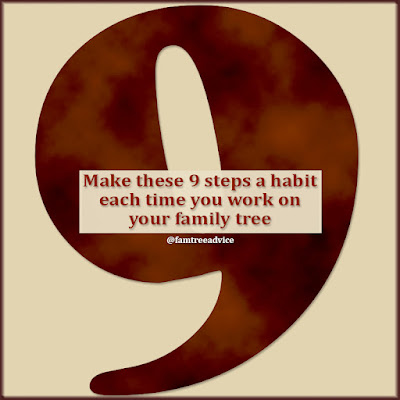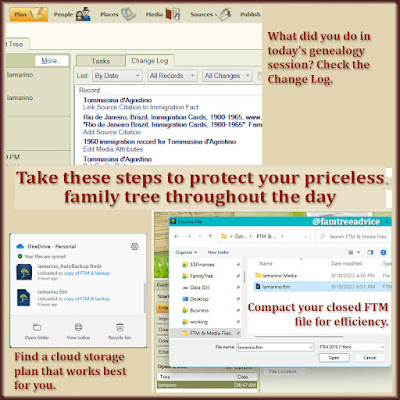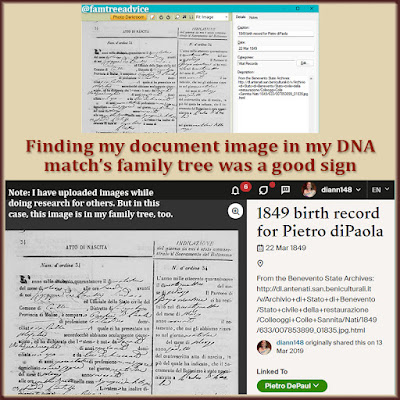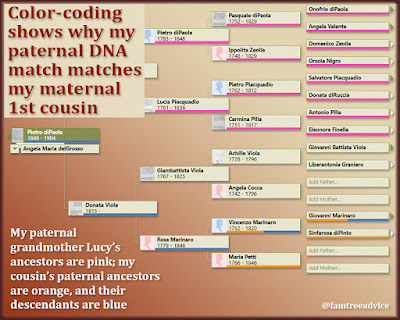As I sat down to watch the Yankees game and wait for Aaron Judge to make history, two things caught my eye:
- Baseball statistics on the TV screen
- My Trivial Pursuit® games on my bookshelf
Then it hit me. What if I combined baseball cards and Trivial Pursuit cards family tree style?
Baseball cards have a picture of the player and the name of his team on the front, and a bunch of statistics on the back. My Trivial Pursuit Simpsons Edition cards have a character image on the side that faces the player. On the other side are the questions to ask, and their answers.
So imagine this. Our Ancestor Trivia Cards will have two sides:
- The side facing the player features the shape and name of the ancestor's state or country of birth.
- The other side has the ancestor's:
- photo, if you have one, or a generic silhouette
- name and basic facts: date and place of birth, marriage, and death
- name(s) of spouse(s)
- name(s) of child(ren)
- occupation
Add a sentence that captures something special about the ancestor. Was he the mayor of his town? Did she lose several children in infancy but raise several more? I have an ancestor who was a rebel against the unification of Italy, and died in a skirmish.
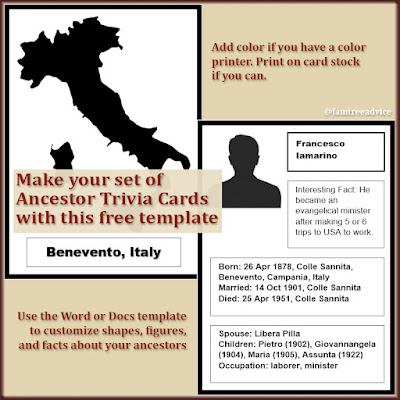 |
| Imagine a set of trivia cards featuring your ancestors! Here's a new genealogy project for your whole family. |
To make a real game of it, ask your relatives to guess who you're describing as you feed them one fact at a time. If they don't want to play, let them go through the cards to find an ancestor whose facts interest them. Then tell them everything you know about that ancestor.
Here's a Microsoft Word template (or a Google Docs template) you can use to make your Ancestor Trivia Cards. Print on card stock or a heavier-than-usual paper stock. Print the front of the cards, then turn the paper over and print the back of the cards.
Wikipedia is a good resource for an image of the shape of your ancestor's state or country of birth. You can do a Google search for different silhouettes or outlines of a man and woman. I found a website called pixabay.com that has graphics you can download for free. You'll find choices that evoke different periods of time and different physical qualities.
Start with your closest ancestors so your relatives will be able to play the game. Then go ahead and make cards for the ancestors who've inspired you with their stories.
Use your Ancestor Trivia Cards to memorialize important members of your family tree.
*Trivial Pursuit is a registered trademark of Hasbro.
And speaking of fun family history projects:
